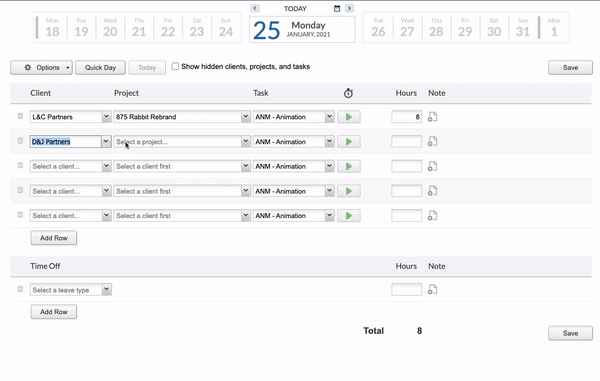Perfecting Nonprofit Time Studies: The Art of Wage-to-Grant Allocations
Table of Contents
You’ve heard the phrase, “There’s no such thing as a free lunch.”
It’s true. Even sending an email (a seemingly free activity) requires you to use your time to write and send the message. And if you’re writing an email for work, that time is financially compensated by your employer. And when that email time could be compensated by a grant, how do you know how much to ask for from the grant funder? In the new remote working environment, how do staff members track the amount of time spent on specific projects and tasks?
The Purpose of Grants in Nonprofit Budgeting
Grants often make up a significant portion of the funding for nonprofit budgets. These funds can come from the federal government, private foundations, public charities, and other organizations. The issue is that every grant has different requirements for the usage of funds and the qualifications for obtaining them. Almost every granter, particularly federal grants, require nonprofits to apply to use the grant monies for a very specific purpose, usually related to a specific program or project, and over a very specific timeframe. There are fewer and fewer grants designed for the “general management” of organizations. Instead, the funds need to be spent on an aspect of your programming directly impacting your mission.
Therefore, when nonprofits create their budgets, they can only allocate grant money to fund the particular projects or programs that they specified in their grant application. Those funds (of course depending on the specifications for each grant) can fund either direct or indirect expenses related to the project.
Almost every granter, particularly federal grants, require nonprofits to apply to use the grant monies for a very specific purpose, usually related to a specific program or project, and over a very specific timeframe. There are fewer and fewer grants designed for the “general management” of organizations. Instead, the funds need to be spent on an aspect of your programming directly impacting your mission.
Therefore, when nonprofits create their budgets, they can only allocate grant money to fund the particular projects or programs that they specified in their grant application. Those funds (of course depending on the specifications for each grant) can fund either direct or indirect expenses related to the project.
Direct and Indirect Costs Can Be Covered by Grant Funds
Let’s say a nonprofit called Helping Hand works with homelessness in their local community. They apply for a grant that is designed to specifically cover a program that provides beds and meals for homeless men and women throughout the winter months. The grant will cover a wide range of the expenses dedicated to this project. The direct expenses will be those that directly cover the items necessary for the program.-
Direct Expenses
- The purchase of food for the meals.
- Blankets and pillows for bedding.
- Wages for employees who worked on programmatic activities, such as distributing meals or working with the people who come to the program for assistance.
-
Indirect Expenses
- The utility bills for the organization’s offices.
- Office supplies purchased for all employees.
- Wages for administrative employees who keep Helping Hand going — think HR or accounting staff whose work benefits multiple programs, including bed and meal provision.
Time Studies for Payroll Expenses
Generally, one of the most challenging expenses to organize or allocate is employee time. Nonprofits may conduct time studies to identify the proper allocation of these types of expenses (usually employee pay) rather than lumping these activities under the unallocated class.When properly allocated, your time can be categorized into three different categories:
- Programs — Activities, unit organization, roundtables, classes provided, etc., can all be classified under time spent for specific nonprofit programs. Oftentimes, grants are provided to fund program expenses.
- Fundraising — Fundraising expenses may include but are not limited to fundraising events, capital campaigns, merchandise sales, etc.
- Management and General — Time spent in board meetings, staff meetings, office management, legal services, personnel procurement, budgeting, auditing, reporting, and more can be allocated under the general and management activities.
The Challenges of Allocating Grant Monies to Staff Salaries
Let’s revisit the situation of the nonprofit, Helping Hand, focused on addressing the issues of homelessness in the community. This organization applies for a grant that will help cover housing and meals for homeless individuals during the winter months. They also apply for a grant to help cover the expenses used to find or apply for new identification documents for individuals in need. These projects will help cover the short-term need for a secure place to stay as well as the long-term need of securing the documentation necessary for job placement. Helping Hand receives both grants. They’re able to use the funds to directly purchase mattresses and blankets, food and drink, and even clothing for people to wear during job interviews. These are the expenses that are fairly easy to allocate.
However, the organization runs into a problem. Both of these projects require a substantial amount of staff member time to get up and running, build back-end processes, and organize documentation. While some of these tasks are directly related to program work, others may be administrative in nature. Seeing as administrative activities are classified as indirect expenses, and most grants cap reimbursement on indirect expenses, Helping Hand now needs to closely monitor the time it spends working on each grant’s administrative activities in order to stay on budget.
In some cases, these administrative activities may be covered by either grant. If no system is in place to monitor the time spent on each grant’s indirect expenses, then Helping Hand may mistakenly over-allocate indirect expenses to one grant. When this happens, their grantor may not reimburse them in full, causing them to tap into their unrestricted annual fund.
While Helping Hand would have been able to pay for both programs at their current capacity, they end up not being reimbursed for all of the time spent on the programs in question. They overdraw from one grant, and leave untapped funds in the other.
Have you spotted the problem yet? In reality, there are several problems here:
Helping Hand receives both grants. They’re able to use the funds to directly purchase mattresses and blankets, food and drink, and even clothing for people to wear during job interviews. These are the expenses that are fairly easy to allocate.
However, the organization runs into a problem. Both of these projects require a substantial amount of staff member time to get up and running, build back-end processes, and organize documentation. While some of these tasks are directly related to program work, others may be administrative in nature. Seeing as administrative activities are classified as indirect expenses, and most grants cap reimbursement on indirect expenses, Helping Hand now needs to closely monitor the time it spends working on each grant’s administrative activities in order to stay on budget.
In some cases, these administrative activities may be covered by either grant. If no system is in place to monitor the time spent on each grant’s indirect expenses, then Helping Hand may mistakenly over-allocate indirect expenses to one grant. When this happens, their grantor may not reimburse them in full, causing them to tap into their unrestricted annual fund.
While Helping Hand would have been able to pay for both programs at their current capacity, they end up not being reimbursed for all of the time spent on the programs in question. They overdraw from one grant, and leave untapped funds in the other.
Have you spotted the problem yet? In reality, there are several problems here:
- The nonprofit doesn’t have a practical way to identify the number of hours spent on the programs to pinpoint the salary amount that could be funded by grant monies.
- The nonprofit is not maximizing the use of their grants but instead dipping into their annual fund to pay for reimbursable payroll expenses, depleting the valuable resources in this fund.
- The nonprofit is not maximizing their funding for indirect expenses that their second grant would have reimbursed.
- Different grants have different requirements, meaning certain expenses may either be non-grant-reimbursable, have a budget limit, or have other specifications you’ll need to adhere to.
- Nonprofits with multiple grants and programs may have some overlap in the expenses that can be covered by several grants.
- Poor allocation practices can result in multiple expenses accidentally allocated to the same grant, causing the funder not to reimburse the expenses in full.
- Improperly allocating time and effort expenses can result in your nonprofit not maximizing your use of a grant and instead using your unrestricted annual fund for a non-essential expense.
How to Allocate Effectively
As we mentioned before, it’s usually not too challenging to allocate many of your direct expenses when they can obviously be covered by grant funds. However, if you don’t have specific places in your accounting system to track these expenses, it’s easy to misplace them. That brings us to the first step to effective allocation.1 Use an Effective System for Fund Accounting
The beauty of nonprofit accounting software is that these systems can be pre-configured to handle fund accounting needs. This means that your accounting software will be set up to handle restricted and unrestricted funds, allowing you to create various categories for each. That includes different funds for tracking the expenses associated with specific grants. In addition to your accounting software, you’ll also need another time tracking system to account for employee time spent on activities associated with different grants. Using this type of system, you can correctly allocate a portion of their salaries to be paid with grant funds rather than unrestricted funds. It’s best when this time tracking system integrates with your fund accounting software so the funds can be immediately identified and allocated, reducing the possibility of human error in identifying correct allocations.
In addition to your accounting software, you’ll also need another time tracking system to account for employee time spent on activities associated with different grants. Using this type of system, you can correctly allocate a portion of their salaries to be paid with grant funds rather than unrestricted funds. It’s best when this time tracking system integrates with your fund accounting software so the funds can be immediately identified and allocated, reducing the possibility of human error in identifying correct allocations.
2 Standardize Processes for Your Team to Track Time and Activities
Having the proper software to track activities and allocate expenses isn’t enough. You also need to standardize team processes to make sure everyone is tracking their time and activities the same way. You might ask that all employees note their time spent on various projects in your time tracking software solution. Even then, some variances may occur, so your leadership should have a good process to legally override employee time entries as well.
But creating processes is just the first step. You also need to communicate those processes to your staff so they understand your expectations around time tracking. Explaining the consequences of incorrect or even vague time tracking (trouble with the IRS, loss of grant funding, drawing more than you planned from unrestricted funds) can go a long way to explain the need for accurate, thorough timesheets.
After you establish these processes for allocating time and expenses, you should periodically check in on them to ensure they’re being followed correctly and that they work for your team’s overall workflow.
You might ask that all employees note their time spent on various projects in your time tracking software solution. Even then, some variances may occur, so your leadership should have a good process to legally override employee time entries as well.
But creating processes is just the first step. You also need to communicate those processes to your staff so they understand your expectations around time tracking. Explaining the consequences of incorrect or even vague time tracking (trouble with the IRS, loss of grant funding, drawing more than you planned from unrestricted funds) can go a long way to explain the need for accurate, thorough timesheets.
After you establish these processes for allocating time and expenses, you should periodically check in on them to ensure they’re being followed correctly and that they work for your team’s overall workflow.
3 Create Specific Report Templates for Each Grant
 As we’ve mentioned a few times, your various grants will have different requirements that must be met by your organization. These differing requirements mean that your grants will each have specific reporting needs. And that means you must have an effective paper trail to back up your functional expense allocations per grant.
When you’ve been accepted for a grant, design a specific grant reporting template that will cover each of the required elements outlined in the grant guidelines. Be sure to pull this report periodically to ensure you’re staying on track and up-to-standard with your grant allocations and funding.
As we’ve mentioned a few times, your various grants will have different requirements that must be met by your organization. These differing requirements mean that your grants will each have specific reporting needs. And that means you must have an effective paper trail to back up your functional expense allocations per grant.
When you’ve been accepted for a grant, design a specific grant reporting template that will cover each of the required elements outlined in the grant guidelines. Be sure to pull this report periodically to ensure you’re staying on track and up-to-standard with your grant allocations and funding.
Don’t Leave Hard-Won Grant Money Unspent
Grants are a vital component of a nonprofit’s finances. Around 31.8% of nonprofit funding comes from government grants or contracts. So, why would you risk leaving those crucial funds on the table? That’s essentially wasting hard-earned money that could’ve been spent much more efficiently. Understanding how this money can be left on the table and undertaking measures to allocate funding more effectively are the first steps to ensuring you’re making the most of your organization’s grant funds.
ClickTime is a time tracking tool that can help your nonprofit track employee time to allocate it to the correct funding source. Learn how ClickTime can help your organization maximize funding by requesting a free demo.
Jon Osterburg has spent the last ten years helping more than 200 nonprofits around the world with their finances as a leader at Jitasa, an accounting firm that offers bookkeeping and accounting services to nonprofit organizations.






